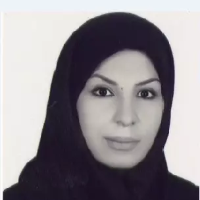Investigation of fungal contamination in some manuscript of Malek Museum
Book and documents damaged or contaminated by microorganisms are a serious threat to the health of users and librarians. This research was aimed to identify the different species of fungi in the archive of museums and their effects on manuscripts and also reviewing the possibility of transferring them to employees or vice versa. Method Current research was conducted in a field experiment. First the manuscripts (Aldoa, Resale Haj and Kholase Alfieh) were examined based on the visual effects of the fungal deterioration, then sampling was performed to cultivate and identify fungi under sterile conditions. Sabouraud dextrose agar medium was used for cultivation and finally, after 10 to 14 days, directs smears were prepared from grown colonies, and fungal genera were identified. the fungi were identified based on microscopic and morphological properties. The results of the studies showed that the fungi on the paper works in the archives of the Malek museum include Aspergillus flavus, Cladosporium, Acremonium, Trichophyton schoenleinii and Sterile hyphae, respectively. Aspergillus, Cladosporim and Acremonium fungi are common allergenic fungi which are identified in the libraries and can cause lung allergies in human. So these fungi can be dangerous for people who suffer from tuberculosis or background lung diseases. T.schoenleinii fungus is a pathogenic fungus in humans and is not common in books. This pathogenic fungus can be probably transferred to the manuscript by one of the librarians or a person who has frequently accessed to this book. Sterile hyphae are usually scattered in the surrounding and are not worth diagnosing and pathogenic.
-
The Study of Jahangir Dome and Guriye Stucco Decorations: With an Emphasis on Applied Geometry
*, Leila Khosravi
Persica Antiqua, Jan 2023 -
Typology, Morphology, and elemental analysis of Early Islamic period glass bracelets from Jahangir dome and Goriye tape in Ilam province.
*, Davoud Agha Ali Gol, Leila Khosravi
Journal of Research on Archaeometry,



